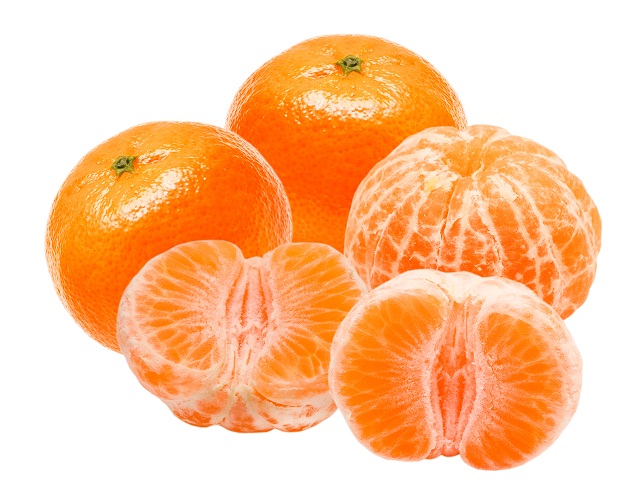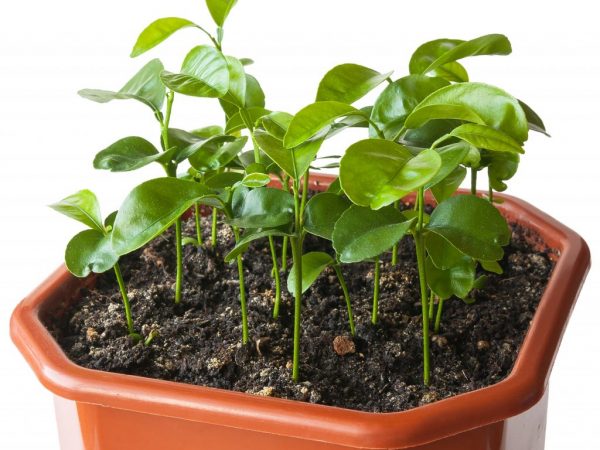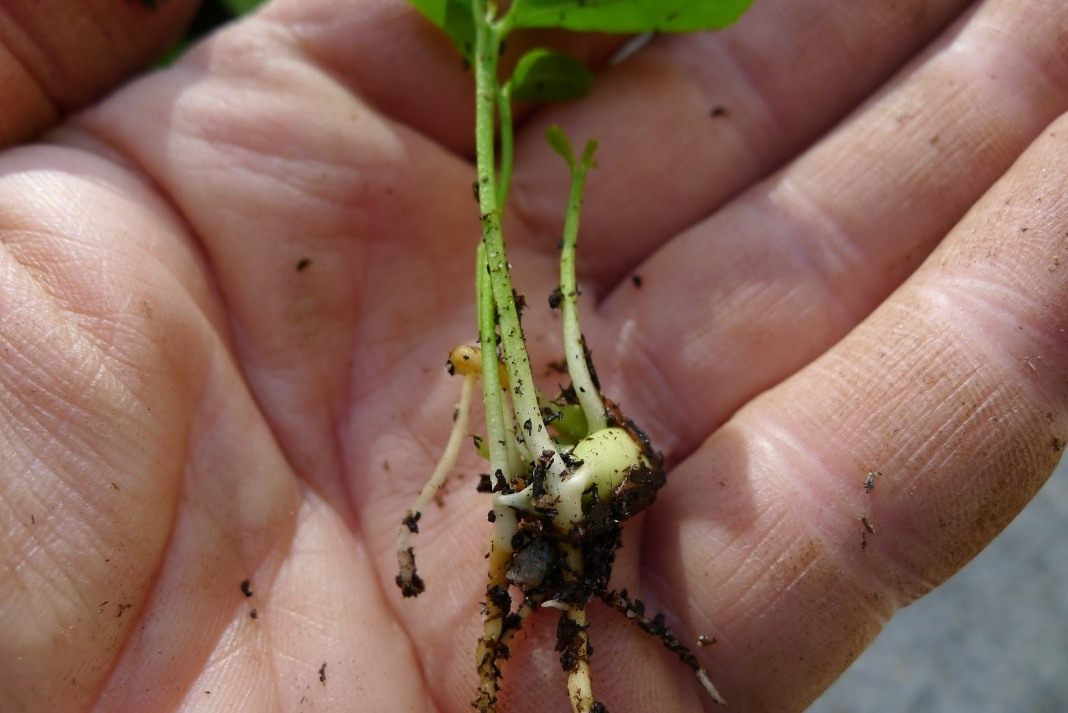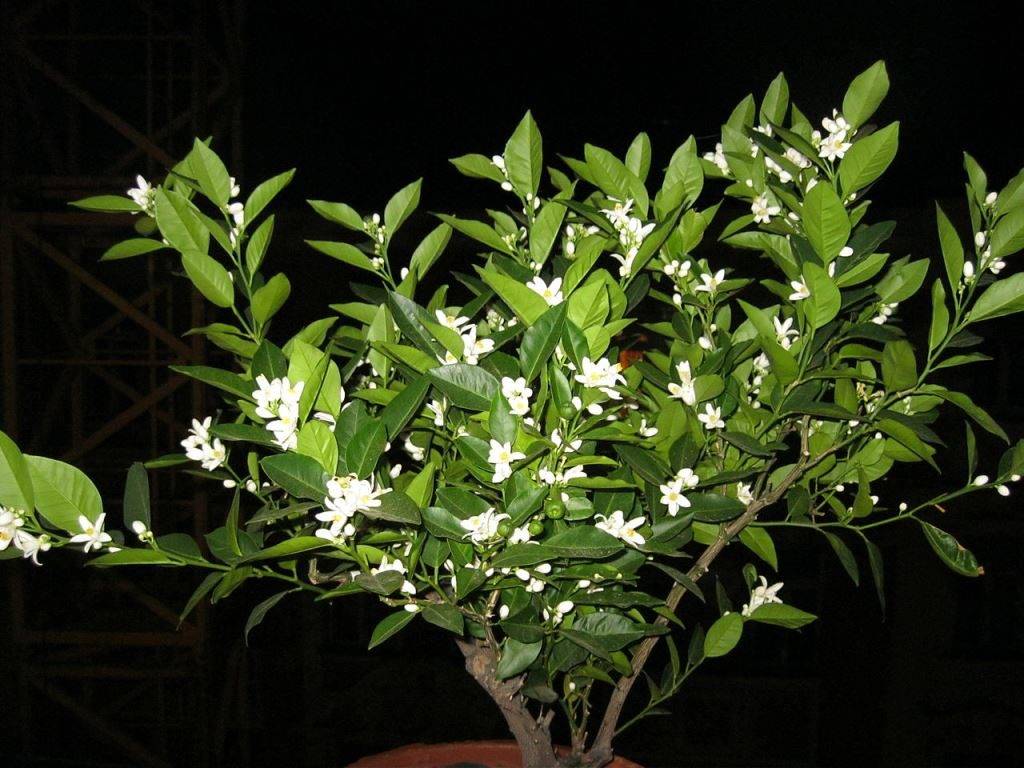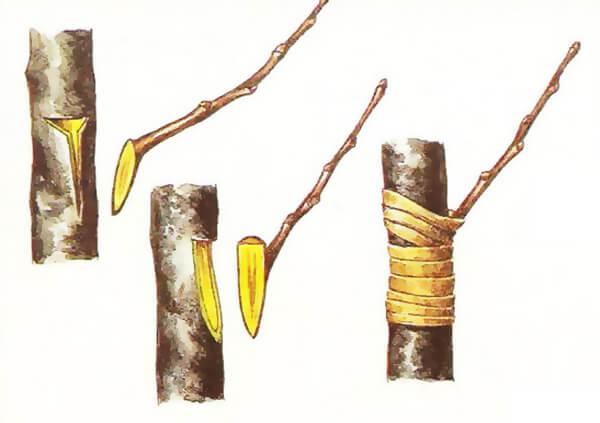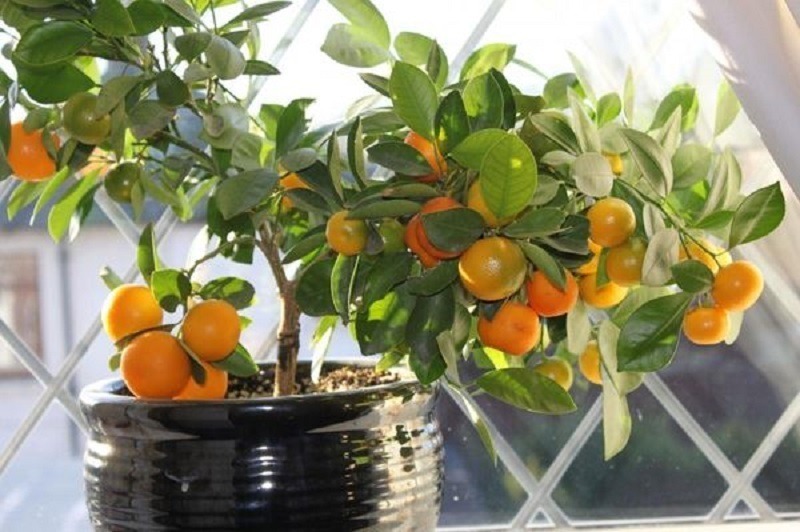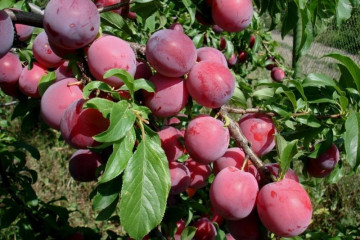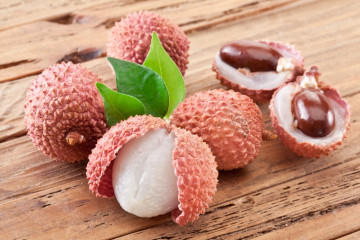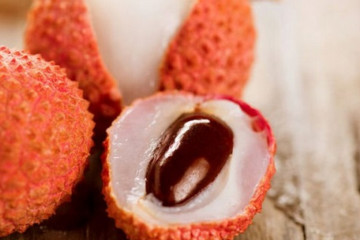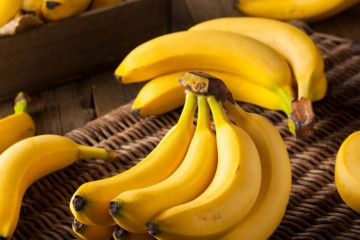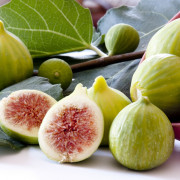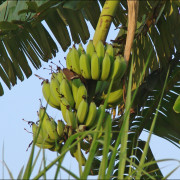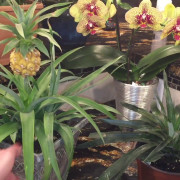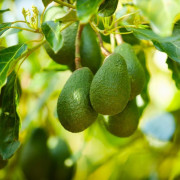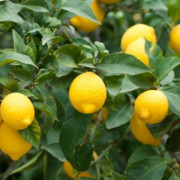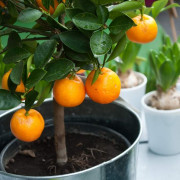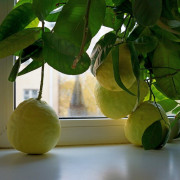How to grow a tangerine from a bone at home
Content:
- Is it possible to germinate a tangerine from a seed at home
- Selection of seeds for planting
- Seed preparation
- Suitable soil and container for planting mandarin
- Planting a mandarin
- Shoot care
- Transplanting tangerine seedlings
- Care of a young tree
- What to do when a tree is flowering and fruiting
- Pruning and shaping the crown
- Diseases and pests of mandarin
Mandarin is an unpretentious plant that does not require complex maintenance. The trees that are sold in the store are not cheap, so if you know how to grow a tangerine from a seed, you can get a fruiting citrus and save a lot.
Is it possible to germinate a tangerine from a seed at home
It is not difficult to grow a tangerine at home if you know how a tangerine grows and what conditions it needs:
- Frequent watering will help form a strong immune system, prevent diseases, ensure rapid growth and good fruiting.
- An annual transplant is a prerequisite for caring for a mandarin. If the roots are cramped in the container, the tree will stop developing.
- Top dressing is necessary in order to improve the quality and taste of the fruit.
In conditions of "captivity" the tree reaches 1.5 m. How much a tangerine tree grows depends on the correct care for it.
Selection of seeds for planting
Before planting a tangerine, you need to choose the right variety and collect the seed. For home germination, the most suitable are the early Abkhaz varieties:
- Agudzera.
- Unshiu.
- Forged-Vasya.
- Miho-Wase.
These tangerines are fast growing, large, very juicy and the sweetest tangerines.
The seeds are taken from purchased tangerines. Only fresh citrus fruits are suitable for collecting seed, fully ripe, without signs of any diseases, damage, rot.
Seed preparation
In order to most likely get a tangerine seedling, you need to plant 10-15 seeds. Some of them may not sprout at all, others - give weak sprouts with low immunity. The process of growing tangerines at home begins with the preparation of the seed:
- The collected bones must be wrapped in gauze soaked in water. The fabric should be slightly damp. As the gauze dries, it needs to be moistened.
- Instead of gauze, you can use a hydrogel. This material retains moisture well, providing the bones with an environment akin to drip irrigation. The seeds are placed in the middle of the gel so that they do not dry out.
- The term for keeping seeds in a humid environment is 2-4 days. As soon as sprouts appear, they can be planted in a nutritious soil.
Suitable soil and container for planting mandarin
At home, growing and caring for a tangerine from a stone is not difficult, but in order for the plant to be strong and produce citrus fruits, you need to prepare the right soil for the seed - nutritious, enriched with mineral elements. The soil should consist of the following components:
- 3 parts of sod land;
- 1 part rotted cow dung;
- 1 part sand;
- 1 piece of leafy land;
- several small handfuls of clay.
Since it is not an easy task to collect all the components in an urban environment, you can buy a ready-made substrate. You need to choose a nutritious, neutral soil. The most suitable are "Biohumus" or "Rose" substrate. You can mix ordinary earth with ash, organic fertilizer and superphosphate, which are taken in equal parts.
The first container can be small, such as a plastic cup. This volume will be enough for seedlings. Planting can be done in one large box, keeping a distance of 10-15 cm between the bones. At the bottom of the cups or a common box, drainage is mandatory - expanded clay or fine gravel.
Planting a mandarin
As soon as sprouts appear from the soaked seeds, they can be planted. Step-by-step algorithm of actions:
- Drainage is placed in the cups at the bottom, prepared nutrient soil is poured.
- The seed sinks into the ground to a depth of 4 cm.
- Containers with seed should be covered with a glass jar or plastic wrap, a bag. This is done in order to create a greenhouse effect and speed up the process of plant germination.
- The containers are placed in a warm room with diffused light. It is important to avoid direct sunlight on the seedlings. The room temperature should be approximately +20 degrees. Seed cups must be protected from drafts.
- Watering is done as the top layer of the earth dries out.
The first seedlings will appear in about 3 weeks. As soon as 2-3 full-fledged leaves are formed on them, they can be seated in other containers.
Shoot care
For tangerine seedlings, it is necessary to provide comfortable conditions so that they can actively grow and get stronger. Taking care of them is not difficult, even a beginner can do it.
Humidity, temperature and watering
Seedlings will rise quickly if you create a comfortable habitat for them:
- The room temperature should be in the range of + 15-20 degrees. Do not allow the indicator to drop below +12, otherwise the seedlings will stop growing.
- Watering is regular, as the topsoil dries out. But the plant cannot be poured, the moisture of the earth should be moderate.
- The humidity should be high. For this, seedlings are sprayed 3-4 times a week.
Lighting for seedlings should be abundant, diffused, therefore it is recommended to place containers with them on the south side.
Transplanting tangerine seedlings
Knowing what a tangerine sprout looks like, you need to wait for 2-3 leaves to appear on it, after which the plants can be transplanted into large containers. Transplanting is carried out by the transshipment method - it is necessary to preserve the old soil on the roots so that the plant adapts faster.
The first pot should have a volume of about 4 liters. Drainage must be placed on the bottom, which can be used as any small pebbles. After transplanting, to ensure rapid growth and strengthening of the future plant, it must be fed regularly.
Care of a young tree
In order for the tangerine, when it grows, to be not only an ornamental plant, but also to produce a crop, it needs to be properly maintained:
- Watering is regular. In addition to moistening the soil, you need to maintain a high level of moisture by spraying the plant. For irrigation, only water that has been settled for 3 days is suitable. It is also recommended to place a tray of water under the tub with the plant so that the drainage will absorb moisture. The frequency of watering in spring and summer is 1-2 times a day, in winter - no more than 2 times a week.
- A transplant is carried out every year in February and early March. With each transplant, a container is taken 5-8 cm larger in diameter. A plant from 7 years old should be transplanted no more than 1 time in 2 years.
- Adequate ambient lighting. In winter, when there is little sun, it is recommended to illuminate the tree with a phytolamp.
Fertilizing is a must in the care of tangerines.
Top dressing
Fertilizers for the growth and development of mandarin should be applied as soon as 2 weeks after the appearance of the first sprouts. Nutrient formulations are introduced every 2 weeks until the onset of autumn.
In winter, fertilizers can be applied only if the soil is poorly nutritious, which affects the growth rate of the tree and its general condition, or in case of insufficient lighting.
In addition to watering the soil with fertilizer, a solution in a weak concentration can be used to spray the leaves. You need to choose liquid fertilizers or those that are diluted with water. It should be at room temperature, be sure to stand. It is strictly forbidden to increase the dosage of fertilizer indicated by the manufacturer, otherwise the plant will receive a chemical burn.
What to do when a tree is flowering and fruiting
When the tangerine begins to bloom, you need to ensure that the ground is always slightly moist. It is strictly forbidden to transplant a plant during its flowering period - from this it will begin to weaken. Since flowering begins in the spring, if necessary, transplant the tangerine, this procedure should be carried out before the color appears.
If there are a lot of flowers, it is recommended to partially cut them off so that the tree is more comfortable. Only an adult plant can give a bountiful harvest without depleting it.
Graft
You can grow tangerine not only for decorative purposes, but also to get a tasty and healthy harvest from it. The smaller the tree grows, the smaller the tangerines will be. But, despite their small size, they retain all their nutritional properties and sweet taste. In order to improve the yield of the tangerine tree, grafting is done.
Before planting a tangerine at home from a bone, you need to stock up on the following inventory:
- grafting knife;
- elastic tape;
- garden var is a mixture that is used to fill wounds in the bark of a tree.
For the procedure, you will need a plant in which the thickness of the trunk is approximately equal to the volume of the pencil. The stalk must be fresh, taken from an adult varietal tree that has already yielded a crop.
Algorithm of actions:
- A T-shaped incision is made at a height of about 10 cm from the soil.
- A prepared stalk with a kidney is inserted into the incision. The stalk should be with a part of the bark - "heel".
- The graft is wrapped with an elastic tape, the plant itself is covered from above with polyethylene or a glass jar.
- While the cutting is rooting, it is necessary to provide the plant with watering and moisture in order to create a favorable humid climate.
- A month later, the bank is removed. By this time, the stalk is rooting and getting stronger.
- After 2 months from the date of the procedure, provided that the branch is finally strengthened, the tree is cut 10 cm higher from the place of the scion. The resulting shoot is directed upward, fixing with a support.
When will be the first fruiting
With proper care of the tangerine grown from the bone, it will give its first harvest in about 3 years. Do not immediately expect large and juicy tangerines until the tree is completely strong.
Pruning and shaping the crown
Pruning an indoor tangerine tree is a mandatory procedure that helps not only to form a beautiful crown, but also to rejuvenate the plant as a whole, from this it gives a bountiful and large harvest. The procedure is performed in early spring.
Before pruning, the tree is wetted in the shower, then its leaves need to be shaken well so that they do not remain too wet. The crown is thinned out, the shoots are shortened, which have already yielded a crop. When forming the crown, branches are cut selectively to get a beautiful silhouette.
Diseases and pests of mandarin
Pests that can attack indoor tangerine:
- shield;
- spider mite;
- whitefly citrus.
To get rid of pests, agents such as Fitoverm or Actellik are used. If there are few insects, you can treat the tree with a solution of laundry soap.
Diseases that the home tangerine is prone to due to improper care of it - leaf rust, cancer, gommosis, root rot, wart. For treatment, specialized means are used, damaged parts of the tree are removed.
Indoor tangerine is a beautiful ornamental plant that also produces tasty and healthy fruits. The tree is planted at home from seeds, and caring for it is simple, which even a beginner without experience can handle.

